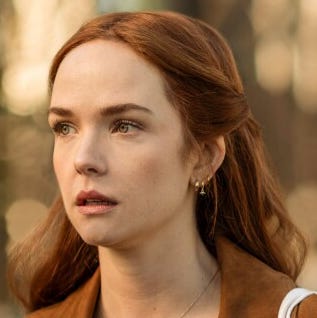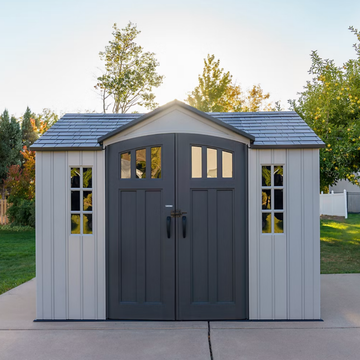1The Eiffel Tower was the tallest structure on Earth.
 Getty Images
Getty ImagesFrom its debut at the 1889 World's Fair in Paris until the completion of the Chrysler Building in 1930, Gustave Eiffel's wrought-iron marvel represented the peak of human engineering. It's still the tallest landmark in the City of Light today at 984 feet, but pales in comparison to the current global record holder, the Burj Khalifa, which stands at 2,722 feet.
2"Teenagers" didn't exist.
 Getty Images
Getty Images Advertisement - Continue Reading Below
3Woodrow Wilson was president.
 Getty Images
Getty Images 4The "Great War" had just ended.
 The LIFE Images Collection//Getty Images
The LIFE Images Collection//Getty ImagesAt the 11th hour of the 11th day of the 11th month of 1918, Germany signed an armistice agreement with the Allies that signaled the end of a four-year global war that killed 14 million people and wounded 21 million others. Peace wouldn't last very long; World War II started two decades later in 1939.
Advertisement - Continue Reading Below
5There was no NFL.
 Getty Images
Getty Images 6Kids played with Raggedy Ann and Lincoln Logs.
 Getty Images
Getty Images Advertisement - Continue Reading Below
7People were reading L. Frank Baum.
 Buyenlarge//Getty Images
Buyenlarge//Getty Images 8Mary Pickford was the picture of beauty.
 Getty Images
Getty ImagesCalled "America's Sweetheart" and the "girl with the curls," the silent film star attracted a huge fan base. All of that hair was typical of the "Gibson Girl" archetype that women emulated during the turn of the century. A few years later, the bobs of the Jazz Age would reign supreme.
Advertisement - Continue Reading Below
9Molasses made headlines.
 Boston Globe//Getty Images
Boston Globe//Getty ImagesBoston suffered an usual and deadly disaster after a large storage tank filled with 2 million gallons of molasses burst and flooded the streets at an estimated 35 miles per hour. North End residents later claimed that the air smelled sweet for decades afterwards.
10Birth control was brand-new.
 Getty Images
Getty ImagesSocial reformer Margaret Sanger actually coined the term "birth control" a few years earlier, publishing the periodical The Birth Control Review and book What Every Mother Should Know in 1917. She helped established a woman's right to contraception, but not without many legal battles and a 30-day jail stay for being a "public nuisance."
Advertisement - Continue Reading Below
11People took street cars to get around.
 Getty Images
Getty ImagesSubway systems had already launched in New York and Boston, but competing companies also operated elevated trains and electric streetcars in major cities. Combined with growing automobile traffic and the continued use of horse-drawn carriages, the roadways were a crowded place to be.
12Groceries were a lot cheaper (kinda).
 Getty Images
Getty Images Advertisement - Continue Reading Below
13Model T's were the most popular car.
 Getty Images
Getty ImagesHenry Ford introduced the affordable automobile for the everyman in 1908, and it soon dominated the streets. A decade later, about half of the cars the United States were T's, also called "flivvers." The automaker's big news in 1919: It would begin offering electric starters in addition to the standard hand crank.
14The World Series was a scam.
 APA//Getty Images
APA//Getty ImagesAccused of throwing the 1919 World Series against the Cincinnati Reds, eight members of the Chicago White Sox were later banned from the sport for life.
Advertisement - Continue Reading Below
15Alcohol was officially illegal.
 Getty Images
Getty ImagesProhibition officially went into effect in 1919 with the passage of the 18th Amendment. The temperance movement cited concerns about the effects of alcohol on political corruption, spousal abuse, and public health, among other consequences. As of 1933 you could (legally) toast to its end.
RELATED: What It's Really Like to Give Up Alcohol
16People spent a lot more on clothes.
 Getty Images
Getty Images Advertisement - Continue Reading Below
17The movies were silent.
 Getty Images
Getty Images 18Irving Berlin dominated the radio.
 Getty Images
Getty ImagesThe prolific songwriter capitalized on the popularity of ragtime and penned plenty of love ballads as well. His 1919 hit "Mandy" later appeared in the 1954 movie White Christmas.
Advertisement - Continue Reading Below
19"Arts and Crafts" decor reigned supreme.
 Getty Images
Getty Images 20Women still couldn't vote.
 Getty Images
Getty ImagesThe public contributions of women to the war effort helped out the suffrage movement. Almost exactly 50 years after the Seneca Falls Convention, President Woodrow Wilson would urge Congress to pass the 19th amendment, which was finally adopted in 1920.

Caroline is a writer and editor with almost a decade of experience. From 2015 to 2019, she held various editorial positions at Good Housekeeping, including as health editor, covering nutrition, fitness, wellness, and other lifestyle news. She's a graduate of the Medill School of Journalism and dreams of the day Northwestern will go back to the Rose Bowl.
Advertisement - Continue Reading Below
Advertisement - Continue Reading Below
Advertisement - Continue Reading Below


































